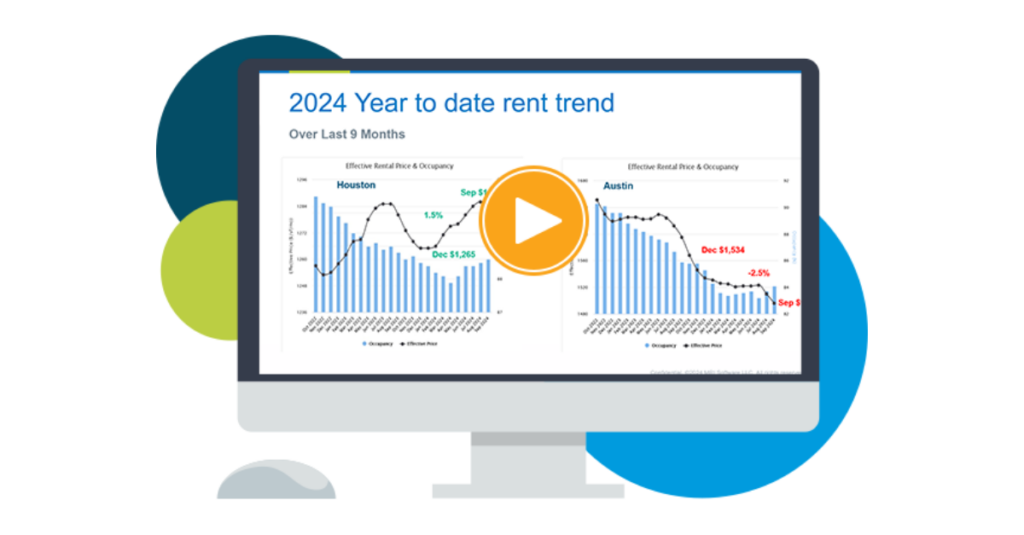Multifamily data: a guide to rent increases
 Multifamily data shows that most landlords increase the rent for their properties each year. It’s important to consider many factors, like market conditions, when raising rent. The right data and research can help you determine not only when to raise rent, but by how much. In this article, we’ll discuss how to use property management data to your benefit for rental increases. We will also look at why you might need to raise the rent in your apartment community.
Multifamily data shows that most landlords increase the rent for their properties each year. It’s important to consider many factors, like market conditions, when raising rent. The right data and research can help you determine not only when to raise rent, but by how much. In this article, we’ll discuss how to use property management data to your benefit for rental increases. We will also look at why you might need to raise the rent in your apartment community.
Using multifamily data to determine the rent increase
For most properties, it’s a policy to increase rent every time a lease term ends. However, it’s essential to look at multifamily data about your local market before making decisions about rental increases.
You see, market data can help you determine how to raise rent in a way that helps you retain tenants. After all, if you increase the rent too significantly, your tenants may simply find somewhere else to live. This creates vacancies that can cost your property a fortune.
Also, it’s important to look at multifamily data about current prices for your area. This is to help ensure you neither overcharge or undercharge. Overcharging can increase vacancies and make it difficult to rent your available units. However, undercharging means you could be losing out on potential profits. You want to charge a fair amount of rent for your apartment units.
Apartment data research from our platform can show you important information about your local market. This goes beyond the average prices for similar communities. Our reports can also show you key data points about things like average rent concessions, occupancy rates, and even new communities currently under construction. All this information helps you make informed decisions about rent increases in your community.
Just be sure you check your local and state laws regarding rent increases. There may be laws in place about when, how, and how much you can raise rent as a landlord in your area.
Why increase the rent?
There’s a reason that most properties increase rent each year. This is to keep up with expenses for everything from property taxes to maintenance services. The costs of running an apartment property typically increase year over year, and you want to ensure you’re charging enough to turn a healthy profit from your property.
Generally speaking, most properties raise the rent by 3% to 5% each year to keep up with inflation and rising costs. In most cases, tenants expect modest increases in rent at the end of the lease term, so it shouldn’t come as a large shock when you send a rent increase letter.
However, that doesn’t necessarily mean your tenants won’t complain. There are a few things you can do to help reduce complaints about rent increases while still improving profits for your community. For instance, when tenants complain, you might cite new amenities, recent upgrades, or faster maintenance services as some of the reasons why you need to raise the rent. These are services that benefit the tenant, which can help them see the value in staying at the higher monthly rate.
Multifamily and property management data from apartment data services
Running an apartment property requires high quality data to crush the competition. At MRI ApartmentData Services, we offer data reporting to provide you with the strategic insight you need. Our team contacts each property in our extensive database each month to offer the most up-to-date and accurate information available for your market. Contact us today to learn more and request a demonstration.
Multifamily market transitions: the changing dynamics of supply, demand, and financing
The multifamily market activity we’ve witnessed since the end of the global pandemic has become a familiar pattern of instability, characterized by extreme shifts in rental growth, supply levels, and absorption rates. Several factors, including the m…

